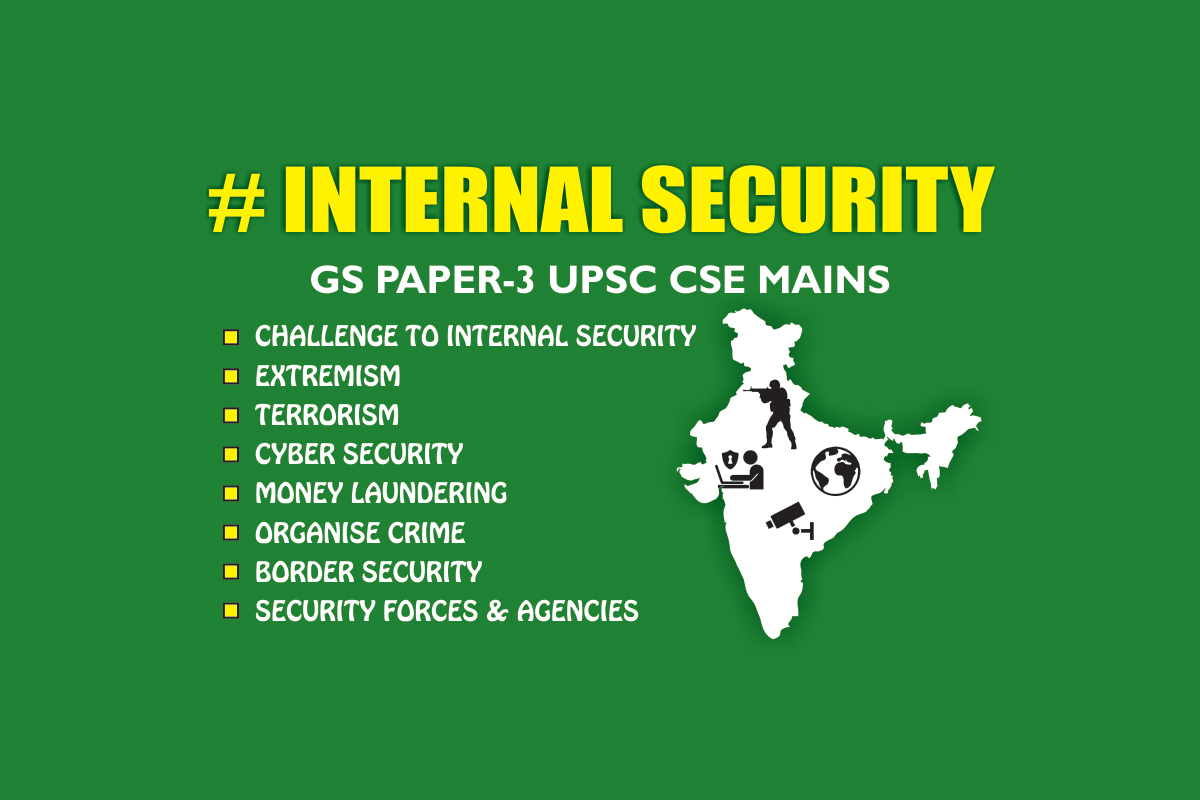Internal Security:
- It is the act of keeping pace with the borders of a sovereign State or other self-governing territories by upholding National laws and defending against internal threats. Article 21 of the Constitution of India, which deals with protection of life and personal liberty, reads that no person shall be deprived of his life or personal liberty except according to procedure established by law
- The right to life enshrined by Article 21 has been literally interpreted more than survival and mere existence or animal existence. Thus the security of an individual is of paramount importance along with the assurance for better enjoyment of life with dignity.
- Subsequently, the question arises about the ecosystem of the person where he lives. If the territory, locality or the ecosystem of the person is disturbed, the concept of the existence is jeopardized. This capitulate the concept of security which is interwoven and interlinked with safety.
Attributes of Internal Security
The main attributes of internal security are:
- Social, political and economic stability
- Prevalence of law and order and domestic peace
- Secure territorial integrity and protect internal sovereignty
- Rule of law and equality before law-law of land should protect everyone irrespective of status
- Peaceful co-existence and communal harmony and cultural cohesiveness
Further, all the dimensions discussed under dimensions of national security can also be added under attributes of internal security.
Threats to Internal Security
Kautilya or Chanakya in Arthshastra wrote about internal and external dangers of the State by configuring that these arise due to wrongly concluded treaties and settlements. He classified four types of threats to security of a country:
- Internal: Most serious and fearful threats are internal which arise from internal originators or internal abettors. Chanakya compared the fear similar to that from a lurking snake.
- External: Purely external which are originated and abetted by foreigner
- Internally originated but externally abetted threats.e.g:When internal terror groups aid hostile nations like Pakistan
- Externally originated but internally abetted threats.e.g: When hostile nations like China support the Maoists of the country.
India’s internal security threat perceptions are a mix of all four shades of threats defined above.The changing external environment also impacts our internal security.Events in neibhouring countries like Pakistan, Srilanka, Banglades, Nepal etc have direct or indirect influence on our internal security.Therefore in today’s information and digital age, both internal and external security threats are inter-related and cannot be seen in isolation from each other.
Furthermore, Kautilya has also attributed the measures of coercion and conciliation to cope with challenges of internal security.


cyber security analytics Identify threats and anomalies associated with users and other entities within your organization: User and Entity Behavior Analytics (UEBA) . To know more >> https://ltssecure.com/security-analytics/